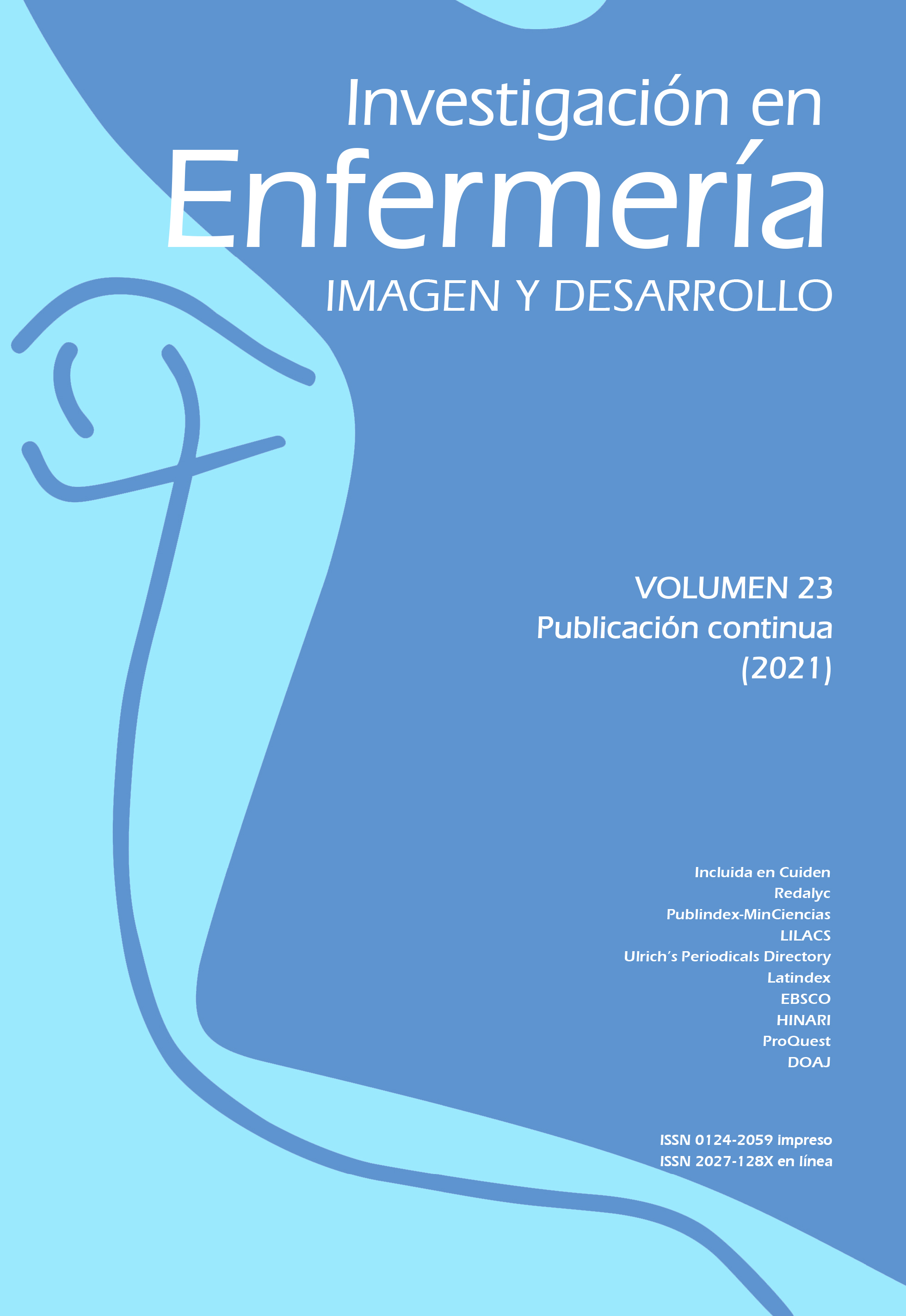Abstract
Introduction: Sexting is defined as sending erotic or pornographic contents through digital devices, usually cell phone or smartphone, which is becoming an increasingly frequent sexual expression. In spite of the fact that it may occur with positive effects for those who do it, there is scarce evidence related to the participation mechanism, the reason driving them, the perception of consequences, among others. Some authors have related sexting to substances use, promiscuity and socioeconomic level. Methods: It is a relational, cross-sectional and observational study including 300 college students of nursing through a non-probabilistic sampling using two instruments, the sexting behavioral scale and the family income-level instrument NSE AMAI. Results: Among the students, 64.7 % stated to have participated in sexting, 26.2% stated to have posted his/her picture in the social media, 13.9% stated to do sexting while been drunk and, 43,8% deemed as false that sexting would make them feel immoral. Prevalence and intensity relationship were found between sexting and income level and having an active sexual life. Conclusion: Understanding the different factors prevailing in the sexting allows developing different contextualized interventions in the risk populations groups that can be accessible to both ends. This would allow the free expression of one’s sexuality without endangering the people’s safety.
Instituto de Seguridad y Servicios Sociales de los Trabajadores del Estado. Cartilla de derechos sexuales de adolscentes y jóvenes. Informe. México: ISSSTE, Prensa; 2018.
Howard D, Klettke B, Ling M. Does body dissatisfaction influence sexting behaviors in daily life? Computers in Human Behavior. 2019;101(10): 320-26. https://doi.org/10.1016/j.chb.2019.07.033
Davis M, Powell A, Gordon D. I want your sext: sexting and sexual risk in emerging adult minority men. AIDS Education and Prevention. 2016; 28(2): 138-52. https://doi.org/10.1521/aeap.2016.28.2.138
Widman L, Javidi H, Maheux A. Sexual Communication in the digital age: sdolescent sexual communication with parents and friends about sexting, pornography, and starting relationships online. Sexuality & Culture. 2021; 25(2): 1-18. DOI:https://doi.org/10.1007/S12119-021-09866-1
Van Oosten J, Vandenbosch L. Sexy online self-presentation on social network sites and the willingness to engage in sexting: a comparison of gender and age. Journal of Adolescence. 2017; 54(1): 42-50. https://doi.org/10.1016/j.adolescence.2016.11.006
Barrense Y, Berchtold A, Surís J, Ajre C. Sexting and the definition Issue. Journal of Adolescent Health. 2017; 31(1). DOI: https://doi.org/10.1016/j.jadohealth.2017.05.009
Broaddus M, Dickson J. The uses of texting in sexual relationships scale: asoociations with risky sexual behavior among at-risk african american emerging adults. AIDS Education and Prevention. 2016; 28(5): 393-404. DOI: https://doi.org/10.1521/aeap.2016.28.5.393
Albury K, Crawford K. Sexting, consent and young people's ethics: Beyond Megan's Story. Journal of media & cultural studies. 2012; 26(3): 463-73. https://doi.org/10.1080/10304312.2012.665840
Mori C, Cooke J, Temple J, Ly A, Lu Y, Anderson N, et al. The prevalence of sexting behaviors among emerging adults: a meta-analysis. Arch Sex Behav. 2020; 49(4): 1109-19.
Bauermeister J, Yeagley E, Meanley S, Pingel E. Sexting among young men who have sex with men: results from a national survey. Journal of Adolescent Health. 2014; 54(5): 606-11. https://doi.org/10.1016/j.jadohealth.2013.10.013
Benotsch E, Snipes D, Martin A, Bull S. Sexting, substance use, and sexual risk behavior in young adults. Journal of Adolescent Health. 2015; 20(1): 307-13. doi: https://doi.org/10.1016/j.jadohealth.2012.06.011
López M. Derechos sexuales y reproductivos: un asunto de derechos humanos. Informe. Mexico: CNDH, Programa Especial de VIH/Sida y Derechos Humanos; 2017.
Naezer M. From risky behaviour to sexy adventures: reconceptualising young people’s online sexual activities. Culture, Health & Sexuality. 2018; 20(6):715-29. doi: 10.1080/13691058.2017.1372632
García J, Gesselman A, Silman S, Perry B, Coe K, Fischer H. Sexting among singles in the USA: prevalence of sending, receiving, and sharing sexual messages and images. Sexual Health. 2016; 13(1): 428-35. DOI: https://doi.org/10.1071/SH15240
Gutiérrez-Puertas V, Gutiérrez-Puertas L, Aguilera-Manrique G, Baños-Martín MDM, Granados-Gámez G, Márquez-Hernández VV. The sexting phenomenon in spanish nursing students. Computers, Informatics, Nursing. 2017; 35(8): 425-30. doi:https://doi.org/10.1097/CIN.0000000000000334
Cho S, Lee E. Development of a brief instrument to measure smartohone addiction among nursing students. CIN: Computers, Informatics, Nursing. 2015; 33(5). DOI: https://doi.org/10.1097/CIN.0000000000000132
Chacón-López H, Romero-Barriga JF, Aragón-Carretero Y, Caurcel-Cara M. . Construcción y validación de la escala de conductas sobre sexting. REOP. 2016; 27(2): 99-115. https://doi.org/10.5944/reop.vol.27.num.2.2016.17116
Comité de Nivel Socioeconómico AMAI. Nivel Socio Económico AMAI 2018. Nota Metodológica. Asociación Mexicana de Agencias de Inteligencia de Mercado y Opinión; 2017.
Cámara de diputados del H. Congreso de la Unión. Ley General de Salud. Última Reforma DOF 12-07-2015; 2015.
A Thin Line. Executive summary: 2011 AP-MTV Digital Abuse Study. [Online]; 2011 [cited 2020 Enero 06. Disponible en: https://on.mtv.com/38snuoP.
Patchin J, Hinduja S. The nature and extent of sexting among a national sample of middle and high school students in the U.S. Archives of Sexual Behavior. 2019; 48(8): 2333-43. doi: https://doi.org/10.1007/s10508-019-1449-y
Strohmaier H, Murphy M, DeMatteo D. Youth Sexting: prevalence rates, driving motivations, and the deterrent effect of legal consequences. Sex Res Soc Policy. 2014; 11(3): 245-55. https://doi.org/10.1007/s13178-014-0162-9
Rice E, Rhoades H, Winertrobe H. Sexually explicit cell phone messaging associated with sexual risk among adolescents. PEDIATRICS. 2012; 130(4): 667-73.
Levine D. Sexting: A terrifying health risk. or the New Normal for Young Adults? Journal of Adolescent Health. 2013; 52(1): 257-58.

This work is licensed under a Creative Commons Attribution 4.0 International License.
Copyright (c) 2022 Investigación en Enfermería Imagen y Desarrollo


